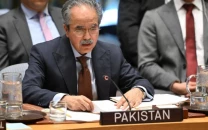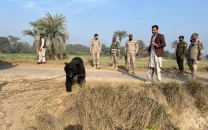Untapped treasures: Harnessing the beauty and bounty with brains
The mountainous north of the country can prove to be a goldmine for people of the area.

The mountainous north of the country can prove to be a goldmine for people of the area. There is a significant potential for the private sector to invest in agro-business, mining, tourism and hydro-power sectors in Gilgit-Baltistan (G-B) and develop the mountainous region, said a report.
But public-private initiatives and capacity-building of local decision makers was crucial for the “right execution” of such projects.
These observations were made in “Gilgit-Baltistan Economic Report” jointly launched by World Bank, Asian Development Bank (ADB), Agha Khan Development Network (AKDN) and Gilgit-Baltistan (G-B) government, on Thursday. The ceremony was attended by Syed Mehdi Shah, Chief Minister Gilgit-Balitstan, representatives of World Bank, ADB, AKDN and other government officials. The 200-page report covers the areas of growth for G-B and also pinpoints the challenges being faced by the region.
It mentions that G-B has made substantial progress over the past 20 to 30 years. Yet, among other factors, many development indicators in the area continue to lag due to geographic isolation, dispersion of the small population, harsh terrain, and unresolved constitutional status.
The report added that the “various arrangements” have been complicated by the unresolved constitutional status of G-B, limited institutional capacity of the local government and complete fiscal dependence on the government of Pakistan.
It mentions that last year’s flooding disaster had major implications for the development trajectory of G-B. The destruction of infrastructure has disrupted private-sector activity and severed trade with China via the Khunjrab Pass on the Karakoram Highway. Furthermore, the formation of the Attabad Lake has left entire communities cut-off from markets and income earning opportunities.
The report seeks ensuring accountability and adequate administrative capacity for effective use of public resources in the rehabilitation and restoration activities.
It emphasised on private-sector led growth in agro-business, hydel generation, minerals, tourism and trade. It further recommends enhancing public service delivery in the areas for the provision of social protection, education, health, and water and sanitation.
Other recommendations made by the report included adequate maintenance of existing infrastructure, while scrutinising new projects and contribution to national progress.
Mining is another resourceful sector in G-B which was highlighted in the report. It could give numerous revenue and foreign exchange if excavated and managed properly.
Similarly, the area has crucial importance from the perspective of protecting and augmenting Pakistan’s natural resources base, in particular ensuring sufficient water flows to downstream rivers, the report adds. It further says major storage of hydro-generation projects planned by Pakistan in coming years including Bhasha and Bunji dams are located in G-B, demonstrating the recognised potential of power generation of these areas at a time of a national power crisis.
“G-B by virtue of its location is the gate to Pakistan’s regional cooperation and trade route with China and eventually with the Central Asian countries,” said the report. With appropriate policy attention and investment, this region could be transformed into an attractive trade and transit hub,” it added.
Published in The Express Tribune, March 18th, 2011.



















COMMENTS
Comments are moderated and generally will be posted if they are on-topic and not abusive.
For more information, please see our Comments FAQ